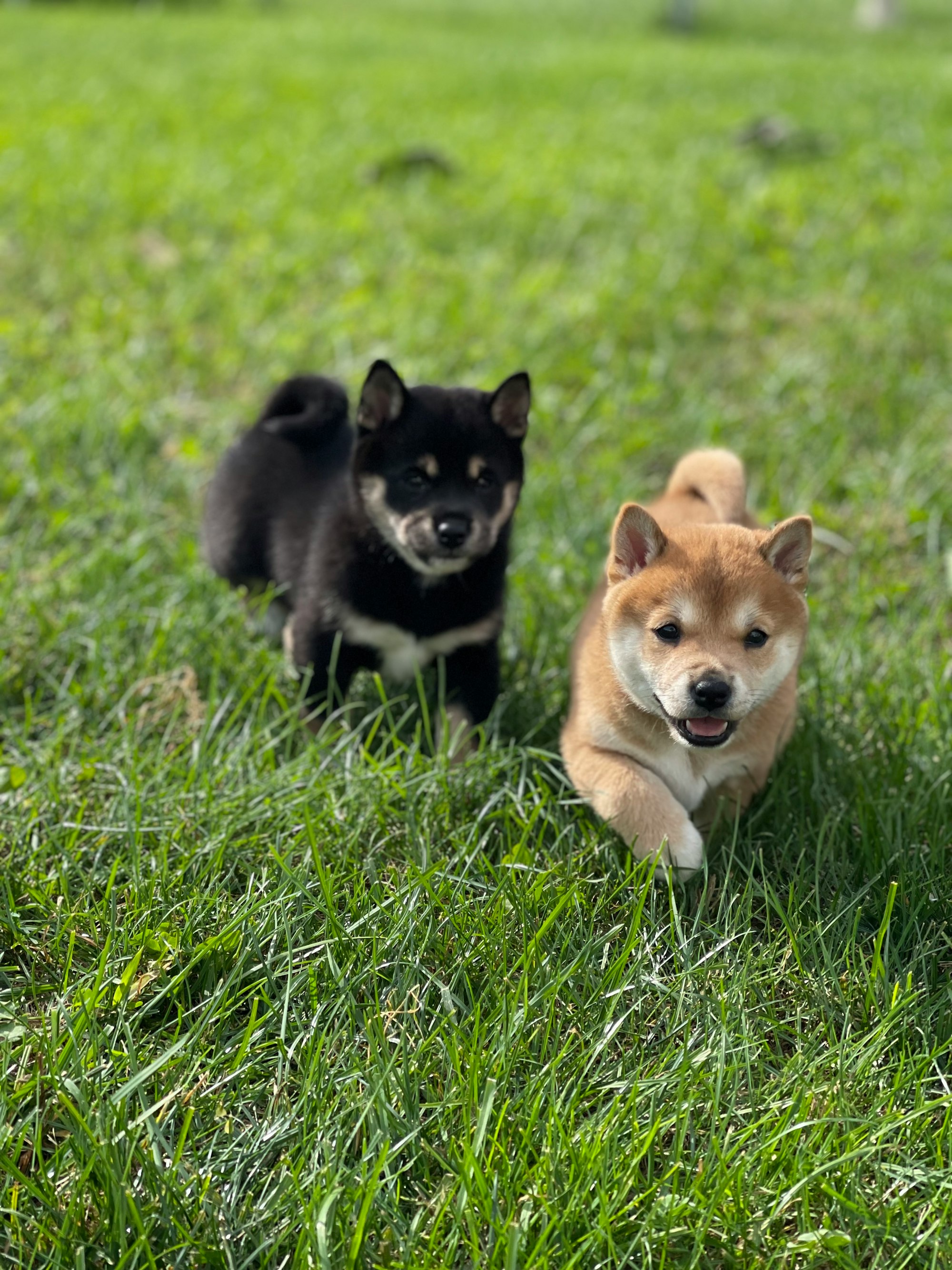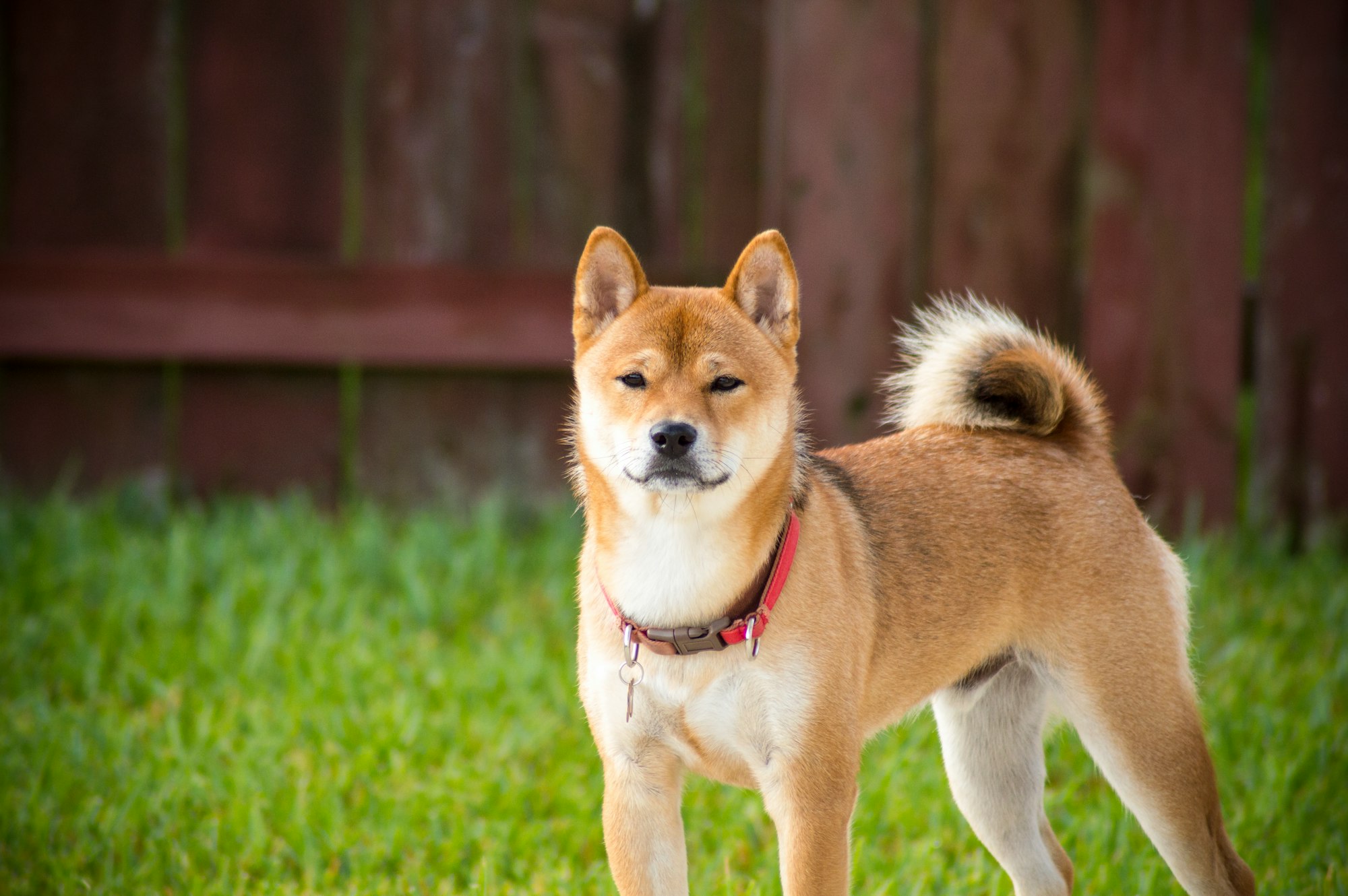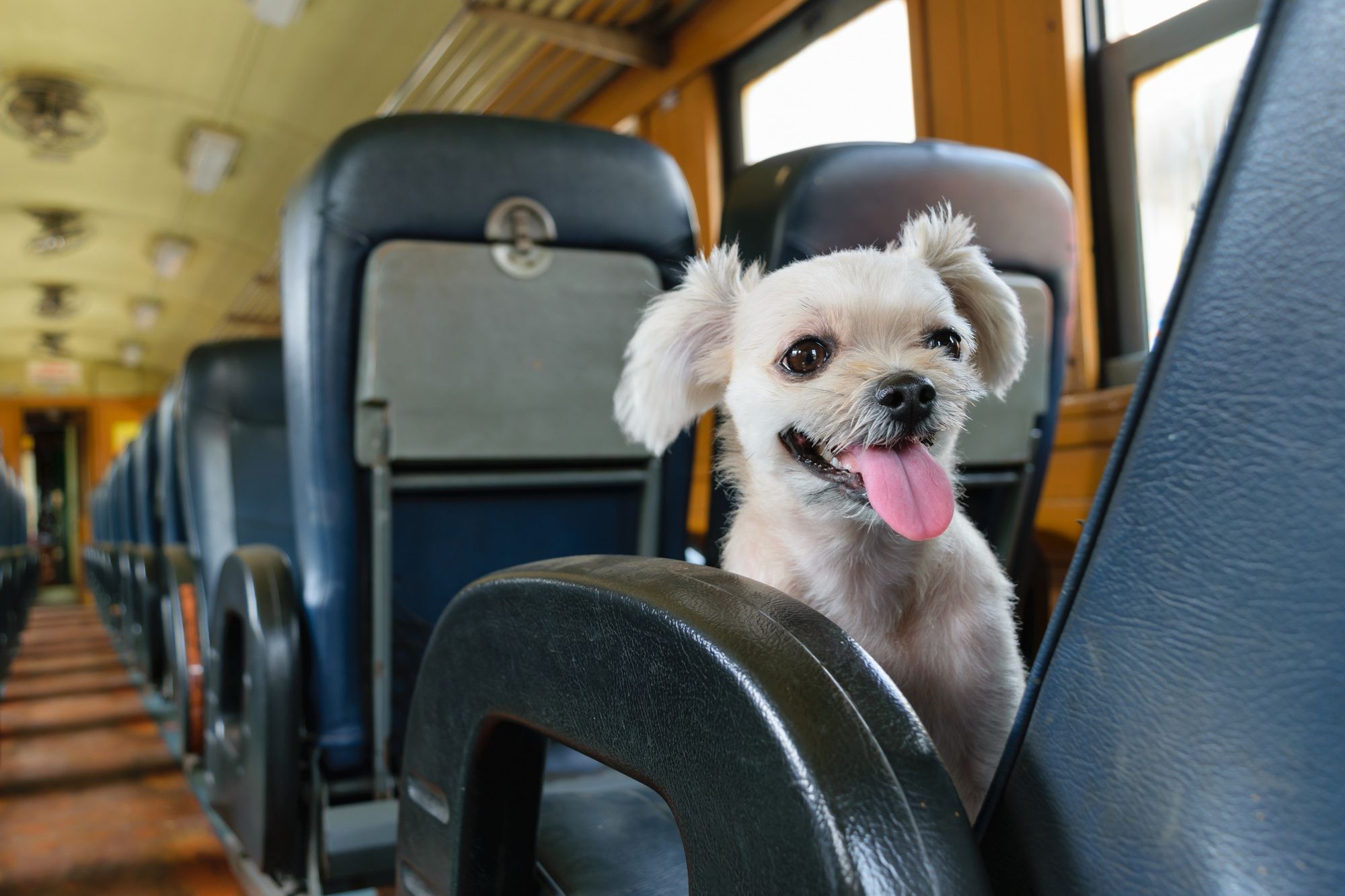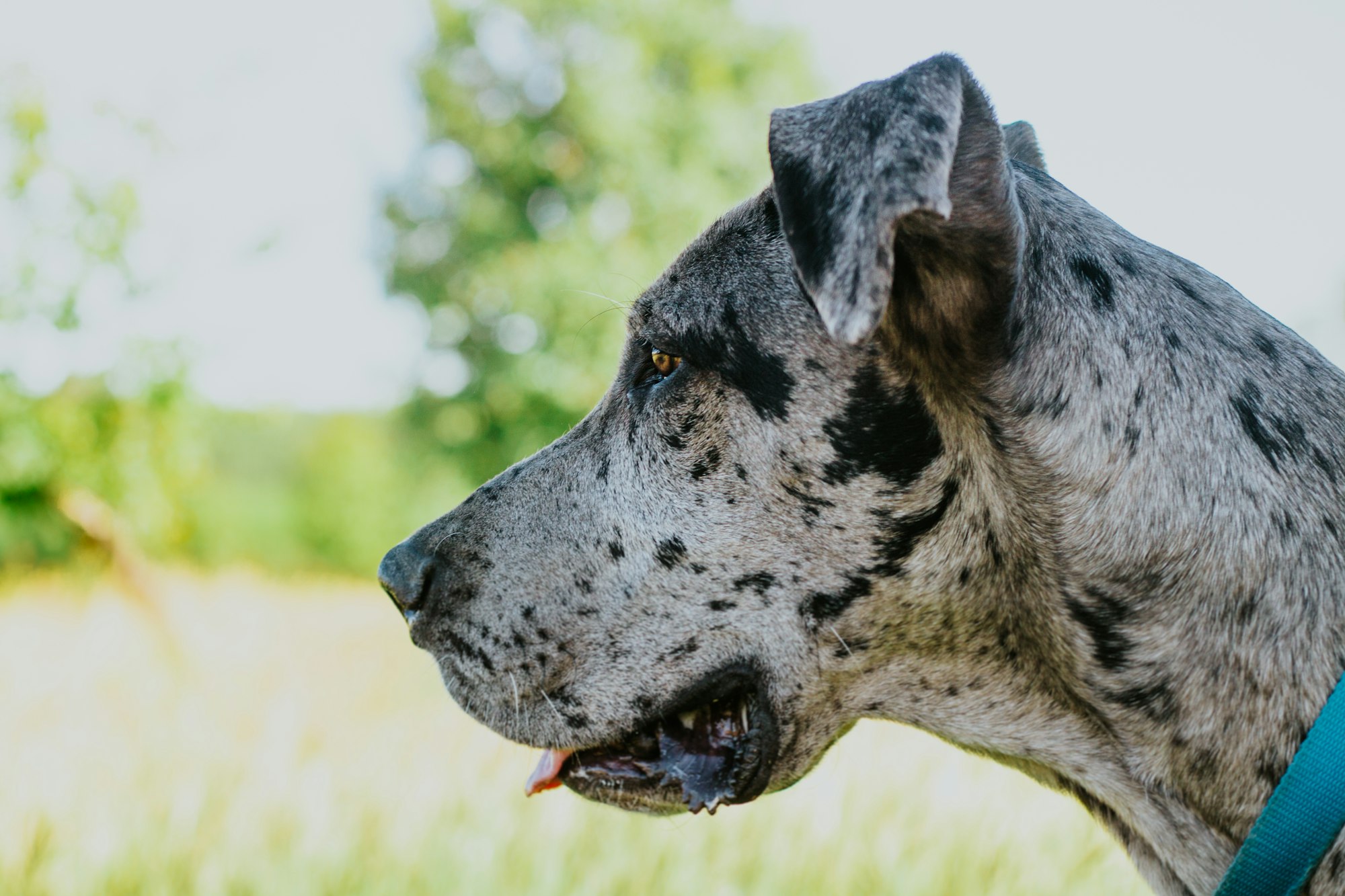The Shiba Inu is a handsome little Japanese hunting dog with a curled tail and a smile. They weigh 17 to 23 pounds and stand 13.5 to 16.5 inches tall, with the males being slightly larger. They are generally healthy and typically live to be 12 to 15 years old. The breed standard details all the physical characteristics a perfect specimen should have and describes the accepted Shiba Inu colors and markings, which are specific to the Shiba Inu breed.
Enhance Your Shiba Inu's Safety and Enjoyment with the Fi Dog Collar
Considering bringing a Shiba Inu into your home? Equip yourself with the to ensure your new companion's safety and well-being right from the start. With advanced GPS tracking, you can keep an eye on your Shiba Inu's location and activity, making sure they are safe and healthy.
Whether you're exploring the park or just lounging at home, the Fi Dog Collar provides peace of mind by monitoring your pet's movements and offering valuable insights into their daily patterns. Visit TryFi.com today to discover how the Fi Dog Collar can help enhance the bond with your Shiba Inu, keeping them secure as you both embark on many joyful adventures together!
What are the Acceptable Shiba Inu Colors?
Among dog breeds, four colors are mentioned for Shiba Inus - red, black and tan, sesame, and cream. The breed standard was written by the National Shiba Club of America and is the document that AKC dog show judges use to place dogs in the show ring.
All accepted coat colors should display the required white markings, called a Urajiro pattern, which will be described later.
All colors of Shiba Inus should have a double coat, with the undercoat being light in color and thick and soft. The outer coat should be short and stiffer. The hair on the curled tail may be longer and should fan out over the back like a brush.

Here are some fascinating facts about the Shiba Inu:
The Shiba Inu is an old breed, coming from the mountains of Japan. Originally, they were used to hunt birds and larger game, such as wild boar.
The breed almost died out in the 1940s. At the end of World War 2, only three bloodlines had survived the bombing of Japan, the resulting hardships, and the distemper outbreak that followed.
Breeders worked hard to save them as a distinct breed. They have actually been recognized as a National Monument in Japan!
In 1954 the first Shiba Inus arrived in the United States, but it wasn’t until 1992 that the breed was recognized by the AKC. Their good looks and friendly personalities make them great family dogs today.
Today they have become the most popular pet dog in Japan and are gaining ground in the United States. The American Kennel Club (AKC) listed them as the 42nd most popular dog in 2021.
Shiba Inus are particularly suitable for experienced dog owners due to their independence and the need for proper socialization and exercise.

What Does the Red Shiba Inu Look Like?
The red Shiba Inu looks a lot like a red fox, with its pointed nose and triangular ears. A variation of the red Shiba Inu is known as 'dirty red,' which features a red coat with black tipping on its back and tail. The color can be bright red, brownish red, or orange-red and should not have any spots or markings except for the Urajiro pattern.
What Does the Black and Tan Shiba Inu Look Like?
This attractive color variation calls for a brownish-black coat with tan spots over the eyes, on both sides of the muzzle, and on the outside of the lower legs. The Urajiro pattern makes these dogs tri-colored, and the hairs show all three colors on each shaft of the hair.
Some people think they look like teddy bears. Others find them to be more formal-looking dogs than the red or sesame versions.

What Does the Sesame Shiba Inu Look Like?
A proper sesame-colored Shiba Inu has a red coat, but the red hair is tipped with black. This is called an overlay. The dog should not have any black spots or patches. It cannot have a black mask, although the black-tipped hairs may form a widow’s peak on the forehead. Variations of the sesame coat include black sesame and red sesame, which are determined by specific ASIP gene promoter variants and the interplay between different alleles.
There must also be clear red eye spots and leg markings. The Urajiro pattern must be apparent in this color, too, although the white markings are not clearly defined.

What Does the Cream Shiba Inu Look Like?
A cream Shiba Inu can look almost white, and the required Urajiro pattern is hard to see. It's the result of the dog inheriting a recessive gene from each of its parents.
The cream color is a serious fault in an American show dog. (The British Kennel Club does accept the cream color.) Dog show judges apply the written standard to each dog in the show ring, and the dog that most closely resembles the standard should win best of breed. Therefore, cream-colored Shiba Inus are not typically shown, but they make excellent pets.
While these dogs are undoubtedly beautiful, they should not be bred with intention. They can live happily as pets and will never miss the show ring.
Are There Other Shiba Inu Coat Colors or Variations?
Shiba Inu dogs may, indeed, come in other color variations, but they are not acceptable to the breed standard and will be penalized in the show ring. Some colors that might occur are cream as mentioned above, white, sable, pinto, or any other color other than those specified in the standard.
Some individuals might not have the required white markings, have too much white, or mark in the wrong places. Spots, except for the proper eye spots, are not acceptable.
It goes without saying that breeders should attempt to produce dogs that are as close to the standard as possible. If you plan on showing or breeding your Shiba Inu, stay with the reds, the black and tans, and the sesame-colored dogs that meet the breed standard in both form and function. No one who cares about the breed will intentionally try to breed “rare” coat colors to satisfy the market.
Do Shiba Inus Change Coat Colors?
When a Shiba Inu sheds its puppy coat, it may also change colors! Markings may change, too. Some puppies are born with white markings on the chest and/or toes that are NOT part of the Urajiro pattern, and these will fade away with time.
It might take a year or two for the final adult coat color to settle. It's not uncommon for the adult Shiba to be a lighter color than its puppy coat suggests. It can be fun to compare pictures taken at different ages.
It's a good idea to microchip your Shiba Inu to prove your pet's identity in case of big color changes over a dog's life.

What Is the Most Popular Shiba Inu Color?
Red is the most popular coat color for a Shiba Inu. It's the one that breeders strive for, and what many people associate with the breed. It's hard to ignore the sheer cuteness of a foxlike, fluffy pup. And you will look stylish on the other end of the leash!
What Is the Rarest Shiba Inu Color?
Sesame Shiba Inus have the rarest color for the Shiba Inu. It’s a complex pattern and has several requirements to be considered true sesame color.
If there’s too much - or too little - black in the coat, the dog would be penalized in the show ring. Lack of proper red eye patches and leg markings will also be penalized. This, of course, does not affect the dog’s other qualities.
Does the Coat Color Affect the Health of the Dog?
There are very few color-related health problems found in dogs, and most of those are related to the merle coat pattern of breeds like Great Danes and Australian Shepherds.
White dogs, especially those with blue eyes, may suffer from deafness. They are more prone to sunburn and may suffer from more skin cancers.
A well-bred Shiba Inu should not suffer from color-related health issues, however, they are known to suffer from orthopedic problems with elbows and hips, and some eye problems. Allergies, especially to fleas and flea bites, are also known to occur.

What is the Urajiro Pattern of the Shiba Inu?
As mentioned above, all Shiba Inus are required to have a pattern of white or cream markings called Urajiro. The basic meaning is that the underside of the dog is pale, or white. The lower muzzle and jaw, neck, chest, belly, insides of the legs, and under the tail are white.
The black and tan dogs sometimes have triangular patches on the chest and may look like they are wearing a bow.

Final Thoughts
It really doesn't matter what color a Shiba Inu is unless you plan to enter dog shows or breed them. All colors - even the ones that don't meet the breed standard - make great companions.
They are delightful little dogs with charming personalities. They may be a little stubborn, but they are also alert and are said to be good watchdogs. They have a fair amount of energy, love to play, and adore their people.
It's said that they are an easy breed to housetrain since they like to be clean, but that they can never be trusted off-leash in an unfenced area.
They are survivors of wartime, famine, and disease. Thanks to the efforts of post-World War 2 breeders, the best attributes of the breed were saved. Modern-day breeders continue the effort to produce the best dogs possible.
Do your research on breeders instead of answering an ad in the classifieds. Be prepared to show that you are a good pet owner and be willing to get on a waiting list for a puppy. The average litter size is only three pups, but a well-bred one is worth waiting for.
A properly bred Shiba Inu is a rare companion who will be with you for over a decade. Doing research before making the commitment will ensure that you both enjoy those years together.
You can't ask for a more appealing dog. They are big enough to join you on long walks or runs, friendly enough to be safe around well-behaved children, and cuddly enough to enjoy couch time with you in the evenings.
Besides all that, they are so darn cute that they attract positive attention wherever you go. Admit it. There's just something about dogs with curled tails that makes them extra special. Follow this link to read more.






